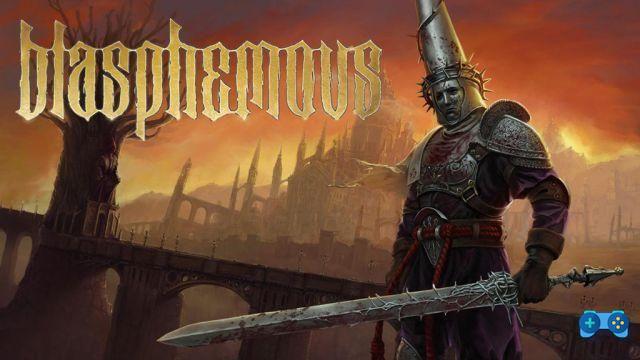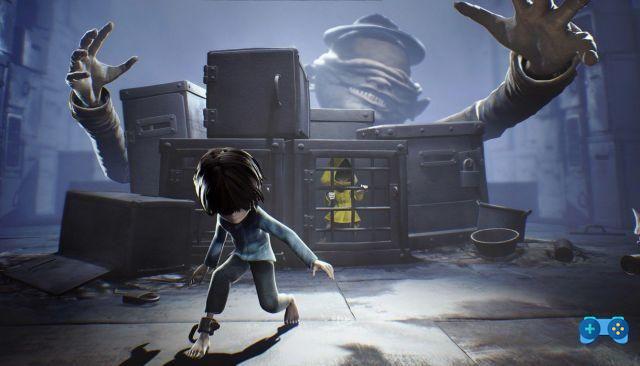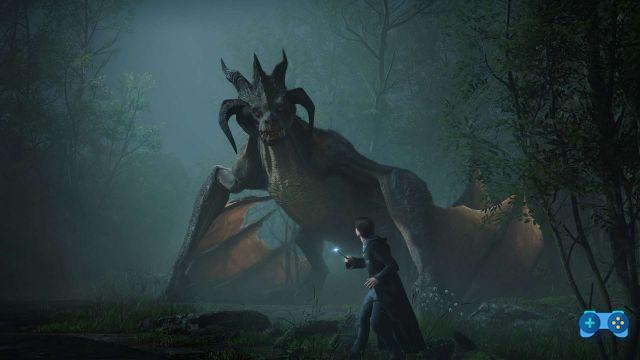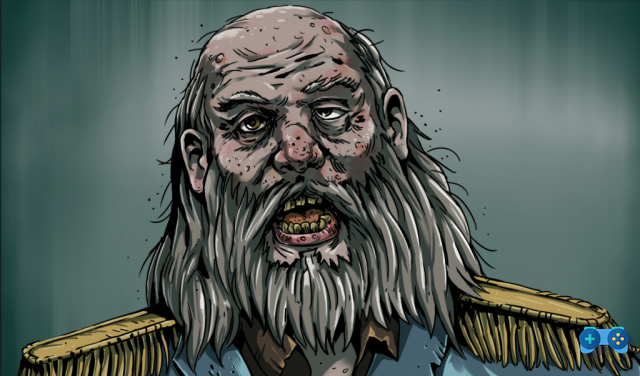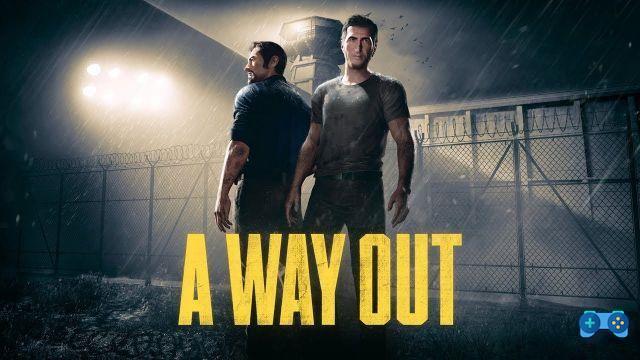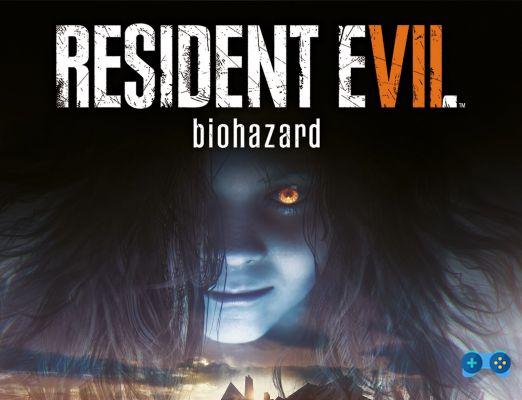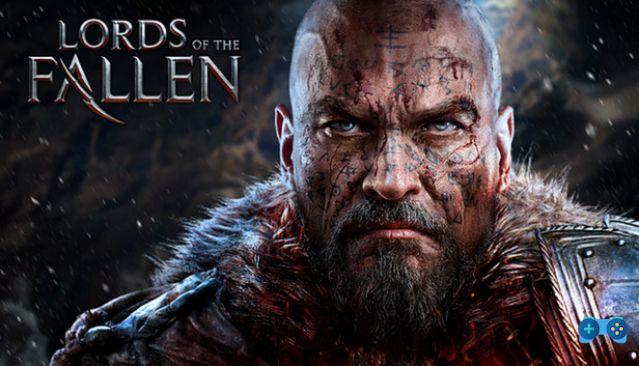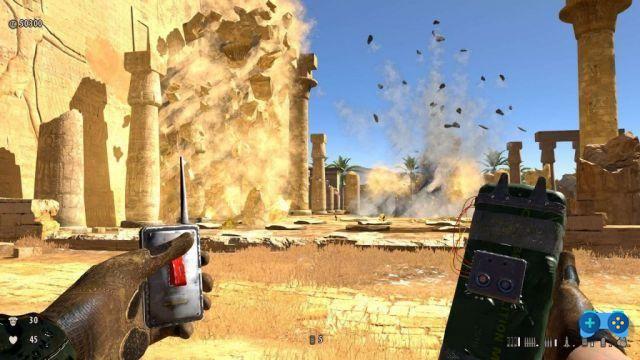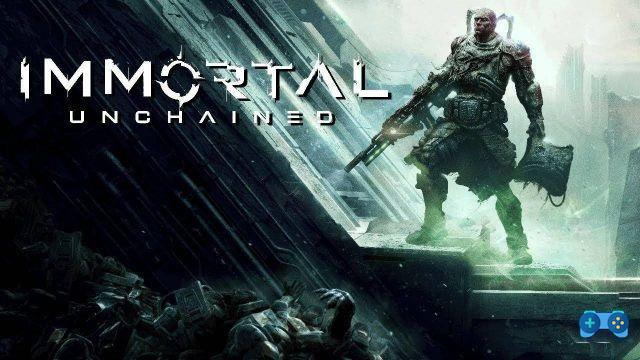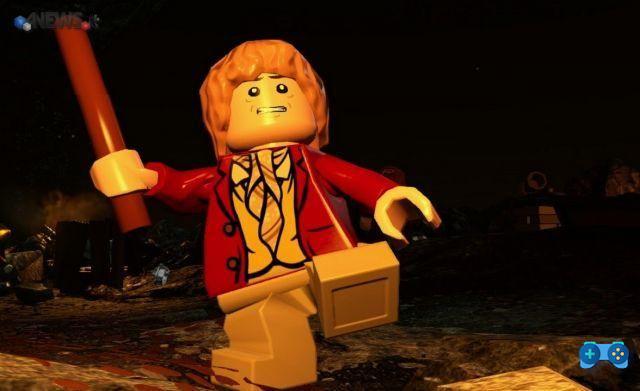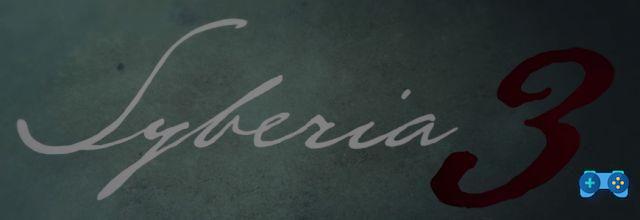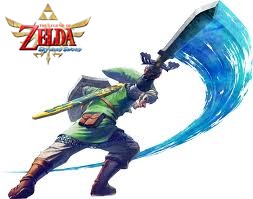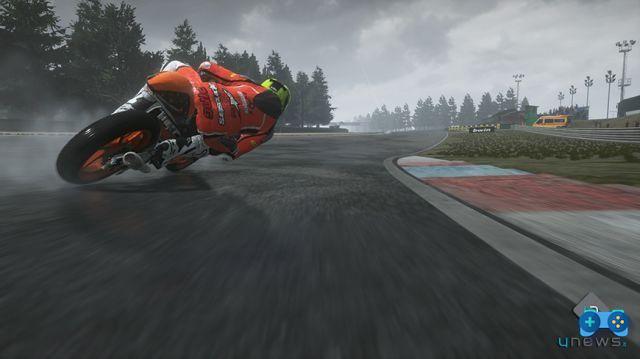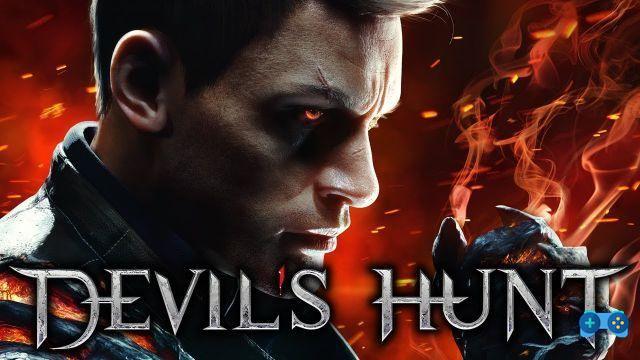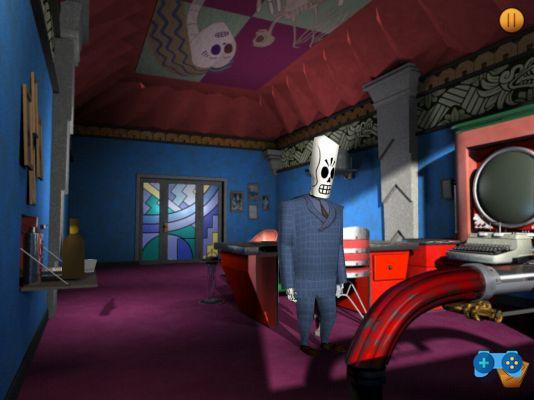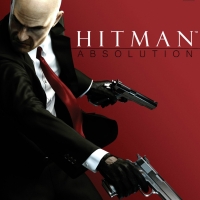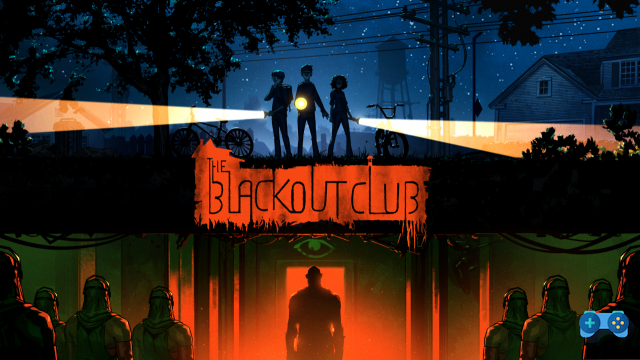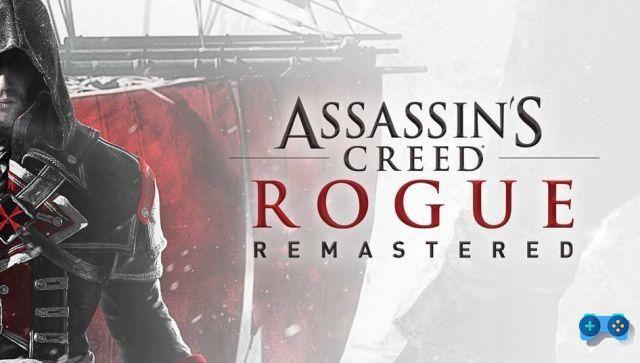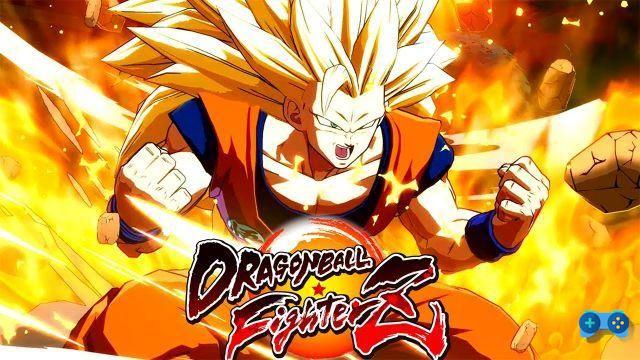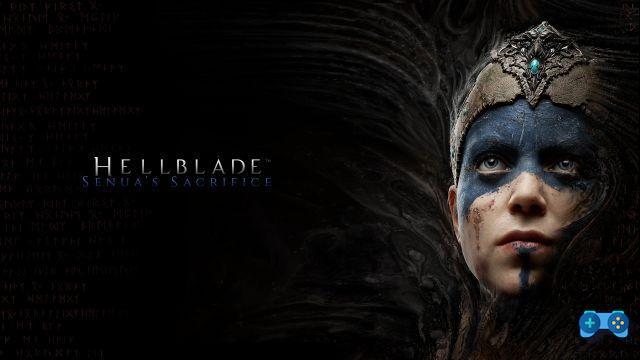
Version tested: PC - Steam
I listened to the voices in my head
Dealing with such a delicate topic as that of schizophrenia is certainly not an easy task, yet both the world of cinema (One flew over the cuckoo's nest, The Black Swan) and the videogame one, have repeatedly tried to tell the discomfort of the mind, with results not always as appreciable as those just mentioned. This is mainly due to the need to combine the element of entertainment with the scientific one; an incorrect balance of these two elements runs the risk of trivializing the operation or, conversely, of making it a pedantic pseudo-scientific treatise with few claims to being exhaustive.
Hellblade tries to tell the psychosis and mental illness by putting the player in the shoes of Senua, a Celtic warrior traveling into the unknown, in search of something that even the player, up to more than half of the game, is not very clear the side dishes. We move in a constant fog, a metaphor of the fog that envelops the senses and the mind of the protagonist, towards an unknown who takes the form of the vengeful, hostile and deceptive divinities of Norse mythology. Out, the giant of fire, Valravn, the god of deception, Fenrir, the terrible hungry beast and finally Whole, the queen of the underworld (Helheim) and of death. The heroic world of Asgard and the golden halls of Valhalla are far away, in their place only misery, despair and fog. Only rarely, after defeating demons with an animal face, does the fog clear, revealing some sporadic rays of sunshine, a metaphor for a newfound mindfulness. But this is also a deception, an illusion and soon the fog, a nefarious omen of the advancing darkness, will return to surround us in its cold embrace.
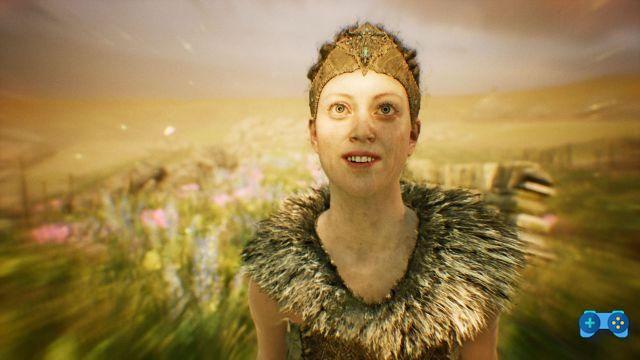
Ninja Theory, with great courage, has deliberately made Hellblade's gameplay a disturbing experience, just as disturbing are the events experienced by our alter ego, Senua. The choice of a camera so close to the character, a slow and sometimes plastered mobility, the images that overlap, the lights that become dazzling and confused and, above all, the continuous voices that overlap with those of the protagonists, cancel the boundary between what is real and what is only illusion. Speaking are the ghosts, real or imaginary, encountered in Senua's past, which re-emerges at times during the adventure, allowing us to at least partially reconstruct the fragmented narrative arc and above all the reasons that push our protagonist to move forward (of which we will talk to avoid unnecessary spoilers). But to speak is also Druth, our travel companion in the abyss of darkness, a man who before Senua, knew the horror and darkness of Helheim and who, like a new Virgil, will accompany us on our path of redemption. . It is Druth, moreover, the narrating voice to act as the glue between the events of Senua and the references to Norse mythology of which the title is dense. Precisely these references to the underlying mythology, which you can listen to by activating special steles scattered throughout the game levels, constitute one of the most interesting secondary quests of the entire future.
I followed my heart, nullifying reason
The gameplay of Hellblade: Senua's Sacrifice essentially revolves around the solving a single environmental puzzle repeated in different forms over and over again ed able to allow us access to areas initially blocked. To do this we will have to use perspective and focus (Senua's ability to concentrate and look with the inner eye) in order to reconstruct, through the elements of the environment, the runic symbols attributable to the different deities we have spoken about, which they seal each door. Thus the particular perspective crossing of the branches of two trees, or the distressing impaled corpse of a man, illuminated by the "focus" will create symbols that will unlock the access doors to the following areas.
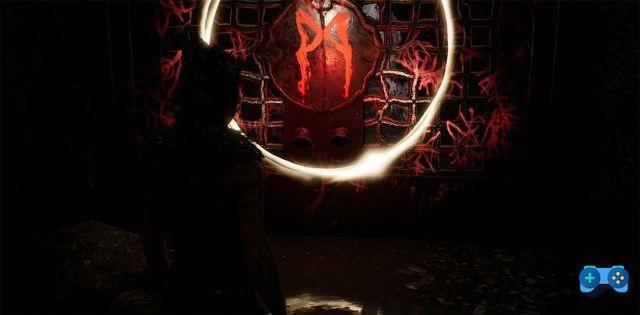
Looking for them is not an impossible task, facilitated as it is by the visions of hundreds of symbols of the same type that will appear as soon as we are close to the area where this perspective will be visible, as well as by the voices in our heads that will invite us to concentrate. Although the idea may seem interesting at first, repetitiveness will soon take over, leaving us with the only desire to do the useless business in order to continue the story. Once the doors have been unlocked, we will then be faced with the only real action phases of the game, in which we will have to face a certain number of enemies, of a rather limited type - in total we have counted less than a dozen different ones. The combat system is also extremely limited, with only two types of attack, light and heavy, a couple of dodges as well as a melee (even while running) useful to unbalance the opponent. The level of difficulty increases as you learn to master the combat system, but it remains very accessible, allowing you to defeat even the bosses at the end of the level with a certain simplicity. To increase exponentially the feeling of urgency and a certain discomfort in the player, it is not so much, as we have said, the level of difficulty but the element of permadeath, of which we will be informed only at a certain point in the game, after a gameover. forced. In fact, with each death the madness of Senua or the rot, as it is defined by Druth, grows dirtying the arm of the protagonist: when the rot reaches her mind, Senua's adventure will definitively end. In fact, the game will automatically delete our saves and we will have to start a new adventure (this last circumstance would seem to be denied by the colleagues of PCgamesN according to whom, there would be no permadeath but only a modification of the events in the game).
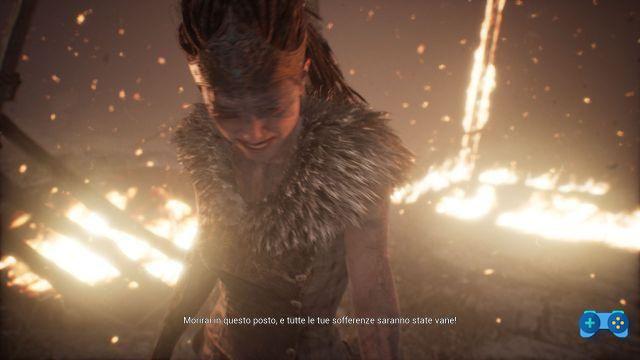
The choice of Permadeath (true or assumed to be) , turned out to be one of the most controversial aspects of the entire production. Those who consider it a sensible choice in a game that does nothing to be "friendly" with the player, appreciated the attempt to avoid that a title with an "adult" tone results in a pantomime of a hack 'n slash; others instead consider this choice a sneaky trick to increase the pathos of a gameplay that, otherwise, would end up becoming boring already after the first hours of play. The truth, as always, is probably somewhere in between. Personally, the need to avoid having to start all over again pushed me to have a more reasoned approach in some game situations, avoiding throwing myself headlong without knowing where, especially towards the final part of the game when the main enemy is not represented more by human enemies, or rather by the faceless simulacra of which we have said before, but by flames that leave no way out. On the other hand, however, at a particular juncture, due to a bug that caused my Senua to burn for no reason at the respawn from the check point, I cursed the impending permadeath several times, letting myself go to some outbursts of anger that it hadn't happened to me for a long time to have in front of a videogame.
I looked at the world with my mind's eye
From a technical point of view Hellblade Senua's Sacrifice is exceptional from all points of view. Above all, however, stands the acting performance of Melina Juergens, which manages to give Senua that humanity capable of canceling the limits of the videogame medium, giving us back one of the most tormented and credible characters that "our" medium has ever known. Part of the credit also goes to Performance Capture, the particular motion capture technique that has always been the workhorse of the Ninja Theory, capable of capturing every smallest expressive detail of the Juergens and transposing it on the polygonal model of Senua, incredibly detailed and realistic.
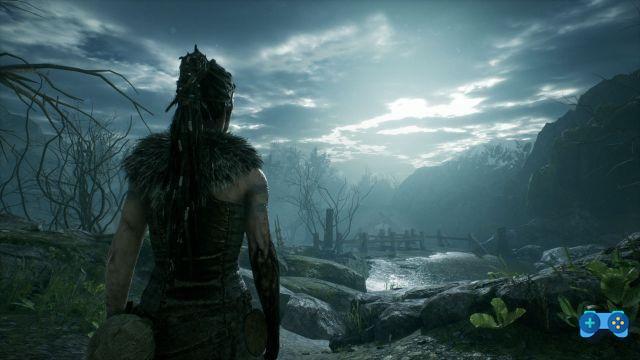
To all this is added a dark, gray atmosphere, enhanced by an exceptional dynamic lighting system that enhances melancholy but incredibly fascinating settings, capable of giving exceptional views that you will find yourself admiring enchanted more than once and immortalizing thanks to the great photo mode. Too bad for some sudden style drop with environmental textures definitely not up to the show offered by the rest of the game, and which I hope will be overcome by some mod or future update. I also particularly appreciated the native support for the 21: 9 format, but above all the sound sector and the audio effects. The first screens in fact advise the player to use stereo surround headphones precisely because it is thanks to the excellent mode 3D surround, which are rendered with a disarming crudeness, the voices that haunt Senua's mind, feeding her inner demons, her doubts and her fears and giving us a realistic portrait of mental illness, moreover faced with a scientific attitude thanks to the support of researchers of psychiatry from the University of Cambridge. Later in the game in a particularly touching section, the sounds will guide you through the darkness. In this exact point of the game you will become aware of the mastery, the style and the delicacy with which the Ninja Theory have managed to face even the deprivation of your main sense, the sight.
Likewise wonderful is the soundtrack created by Andy Garcia and David La Plegua, capable of underlining with credibility the inner torments of the protagonist.
… And in the end I defeated my demons
An experiment. This is the first idea I had of Hellblade since the first day I started following the Ninja Theory development diary. The great attention to motion capture, to music, to the visual sector, to mental illness, had given me the impression that Ninja Theory had much more (or much less, depending on your point of view) in mind than a video game, which they aimed to create something different able to tell a story of love and death, of sacrifice and passion, through an unjustifiably undervalued medium. At the same time I feared that Hellblade could only become a showcase of the talent of the Antoniades group, which is beyond doubt.
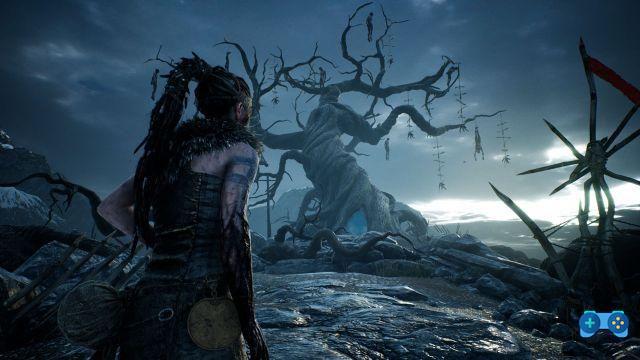
Precisely this talent, however, and the respect towards the authors of two small and misunderstood pearls of the last generation, Heavenly Sword and Enslaved, made me keep my faith firm, even when the game began to take a different turn from what I would have expected, gradually transforming itself into an experiment, into a hybrid product halfway between an indie game dedicated to telling the theme of mental illness and that of the entertainment of a triple A title. At the end of the fair, however, the 'purely playful aspect has given way to the artistic component: stripping off the need to be an entertainment product and offering only a bare, almost sketchy gameplay, Hellblade has transformed into something different: a story, an adventure in the meanders of the human mind, an artistic work.
This is the great experiment carried out by Ninja Theory with Hellblade: more than the technique, the gameplay, the music, the exquisitely playful features, it is the idea of being able to combine the narrative and artistic freedom of independent developers, with technologies and budget of a "main stream" production, to make Hellblade a cornerstone of the videogame industry.
Whether this experiment was successful or not, we are not the ones to say. Hellblade is a personal, intimate experience, at times disturbing and frustrating, at times wonderful and moving, but always incredibly exciting. It is a necessary step in the evolution of the videogame medium; you can love it or hate it but the only thing you cannot do is ignore it.
Updating - Since last April 11, Hellblade Senua's Sacrifice is also available on the Microsoft flagship. The game is completely identical to the PC and PS4 counterparts released last year, but the version Xbox One X offers three additional graphics modes. The first favors the resolution in 4K, the second the framerate, very close to 60 but slightly reducing the overall visual detail and finally we find the mode Improved Visual Effects (Enriched Visuals Mode), which although it turns out to have a resolution slightly lower than 4k, thanks to a better post processing makes Hellblade very close to the maxed PC version.

























